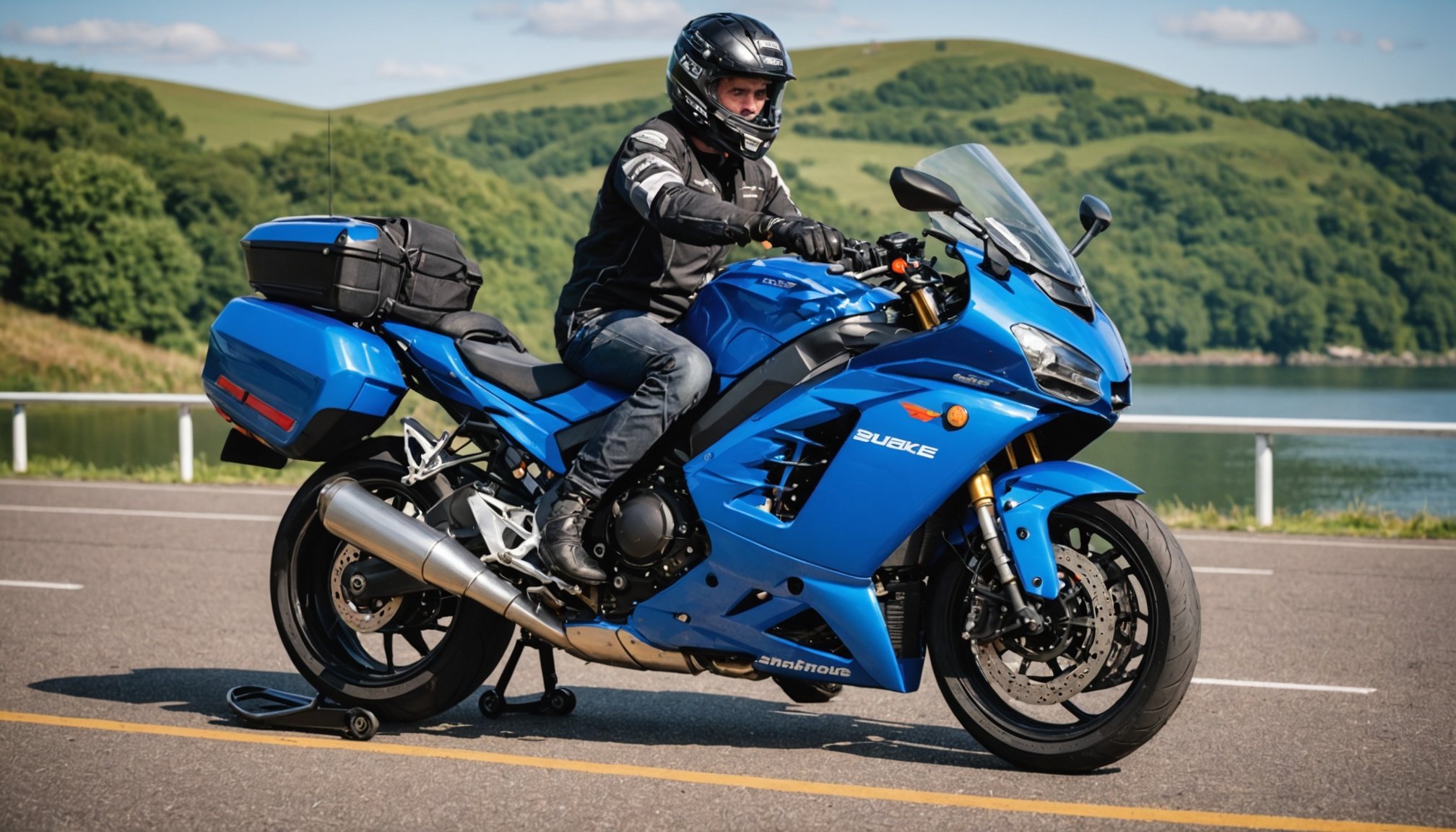Ultimate Guide: Safely Transporting Your Sport Bike by Ferry Across the UK
Preparing for Your Journey
When it comes to transporting your sport bike by ferry across the UK, preparation is key. Here are some essential steps to ensure a smooth and safe journey for both you and your vehicle.
Understanding Ferry Regulations
Before you start planning, it’s crucial to understand the regulations and services offered by ferry operators. Not all ferries allow the transport of motorcycles or bicycles, so it’s important to check ahead of time. For instance, freight ferries typically do not accept bookings for bicycles, motorbikes, or passenger cars, only catering to freight vehicles like commercial vans and HGVs[4].
Also read : Top Techniques to Safely Regain Control of Your Sport Bike After a Skid on UK Roads
Choosing the Right Ferry Operator
Select a ferry operator that is experienced in handling motorcycles and bicycles. Operators like Orkney Ferries, which serve the Orkney Islands, offer services that are well-suited for transporting bikes. Make sure to book your ferry ticket as early as possible, especially during peak travel seasons, to ensure you secure a spot[2].
Packing and Securing Your Bike
Properly packing and securing your bike is vital to prevent any damage during the journey.
Also to read : Step-by-Step Guide to Installing a Hydraulic Clutch on Your Sports Bike for Effortless Riding in UK Traffic
Using the Right Equipment
Invest in a good bike box or bike bag to protect your bike during travel. Here are some tips for choosing the right equipment:
- Bike Box: A sturdy bike box can provide excellent protection. Look for one that is specifically designed for your bike’s size and type.
- Bike Bag: If you prefer a bike bag, ensure it is padded and has reinforced areas to protect vulnerable parts of your bike.
- Soft Cases: Soft cases can be more convenient but may not offer the same level of protection as hard boxes.
Securing Your Bike on the Ferry
Once you arrive at the ferry terminal, follow these steps to secure your bike:
- Arrive Early: Get to the terminal with plenty of time to spare. This will give you enough time to secure your bike properly.
- Use Tie-Downs: Use tie-downs or straps provided by the ferry operator to secure your bike to the car deck. Make sure these are tightened firmly to prevent any movement.
- Protect Vulnerable Parts: Use additional padding or covers to protect vulnerable parts of your bike, such as the handlebars and pedals.
Booking and Travel Arrangements
Booking your ferry and making travel arrangements can be a bit complex, but here’s how to do it smoothly.
Time Booking and Scheduling
When booking your ferry, consider the time of day and the duration of your trip. Here are some tips:
- Departure Times: Check the departure times and plan your day accordingly. Early morning or late evening ferries might be less crowded.
- Travel Time: Calculate the travel time and ensure you have enough time to reach your destination without rushing.
Additional Charges and Services
Be aware of any additional charges or services that might be applicable:
- Charges Port: Some ferries may charge extra for certain services like priority boarding or additional luggage.
- Bike Transport Fees: There may be specific fees for transporting bikes, so make sure to check these when booking.
Safety and Security Measures
Ensuring the safety and security of your bike is paramount during ferry travel.
Checking Your Bike
Before boarding the ferry, perform a quick check on your bike:
- Tire Pressure: Ensure the tire pressure is correct to prevent any damage during transport.
- Loose Items: Secure any loose items such as mirrors, GPS devices, or accessories to prevent them from getting damaged or lost.
Onboard Precautions
Once onboard, take these precautions:
- Keep an Eye on Your Bike: If possible, keep an eye on your bike during the journey. If you can’t, make sure it is securely tied down.
- Weather Conditions: Be aware of weather conditions. If the ferry is expected to encounter rough seas, ensure your bike is extra secure.
Practical Tips and Advice
Here are some practical tips and advice to make your journey smoother:
Packing Essentials
Here is a list of essentials to pack for your trip:
- Tool Kit: A basic tool kit with Allen wrenches, tire levers, and a pump.
- Spare Parts: Spare tubes, tires, and any other parts that might be prone to damage.
- Clothing: Appropriate clothing for the weather and your ride.
- Documentation: Ensure you have all necessary documentation, including your passport and bike insurance.
| Item | Description |
|
|-----------------------------------------------------------------------------|
| Tool Kit | Basic tools like Allen wrenches, tire levers, and a pump |
| Spare Parts | Spare tubes, tires, and other prone-to-damage parts |
| Clothing | Weather-appropriate clothing and riding gear |
| Documentation | Passport, bike insurance, and any other relevant documents |
| Bike Box/Bike Bag | Sturdy box or bag to protect your bike during transport |
| Tie-Downs | Straps or tie-downs to secure your bike on the ferry |
| Additional Padding | Extra padding for vulnerable parts like handlebars and pedals |
Anecdote: A Smooth Ferry Ride
“I once transported my sport bike from the mainland to the Orkney Islands. I made sure to book the ferry well in advance and arrived early to secure my bike. The ferry staff were very helpful, and with the right equipment, my bike was safe and secure throughout the journey. It was a smooth ride, and I was able to enjoy the scenic views without any worries,” says John, a frequent bike traveler.
Transporting your sport bike by ferry across the UK can be a straightforward process if you are well-prepared. Here are some final tips to keep in mind:
- Make Sure: Double-check all details, from booking to securing your bike.
- Need to Know: Understand the ferry operator’s policies and any additional charges.
- Your Trip: Plan your trip carefully, considering travel time and weather conditions.
- Your Bike: Always prioritize the safety and security of your bike.
By following these guidelines, you can ensure a safe and enjoyable journey for both you and your bike.
Additional Resources
For more detailed information, here are some resources you might find useful:
- Ferry Operator Websites: Check the websites of ferry operators like Orkney Ferries for specific guidelines and services.
- Cycling Forums: Join cycling forums or communities to get advice from other cyclists who have transported their bikes by ferry.
- Travel Guides: Consult travel guides specific to the UK and ferry travel for additional tips and insights.
With the right preparation and knowledge, transporting your sport bike by ferry can be a hassle-free experience, allowing you to enjoy your ride and the beautiful landscapes the UK has to offer.






